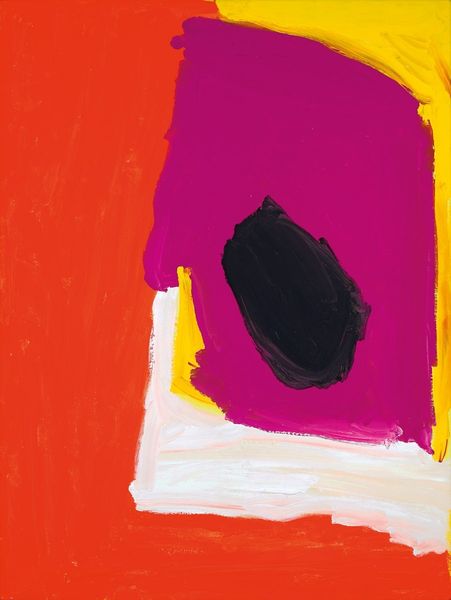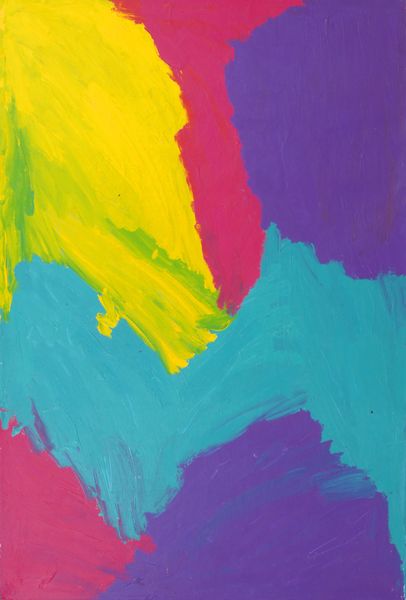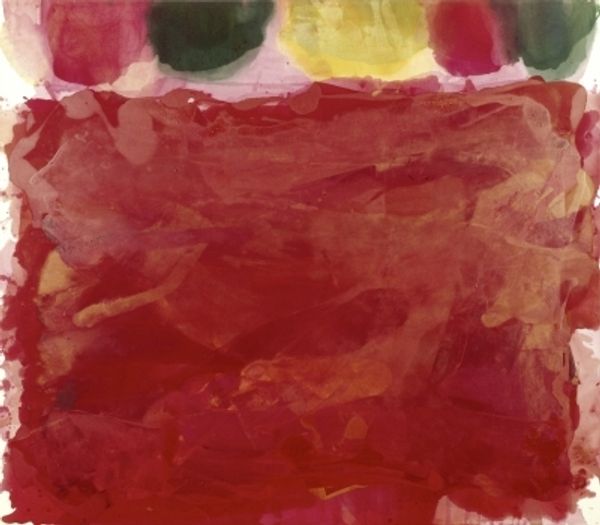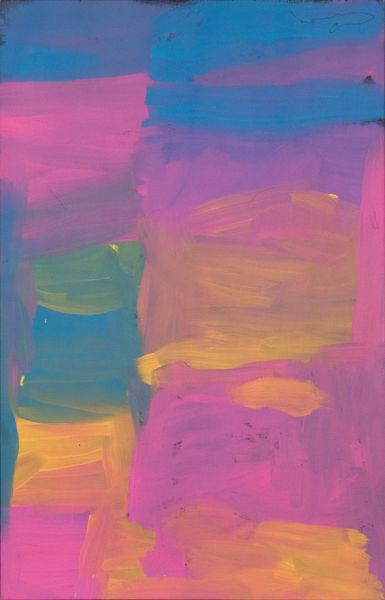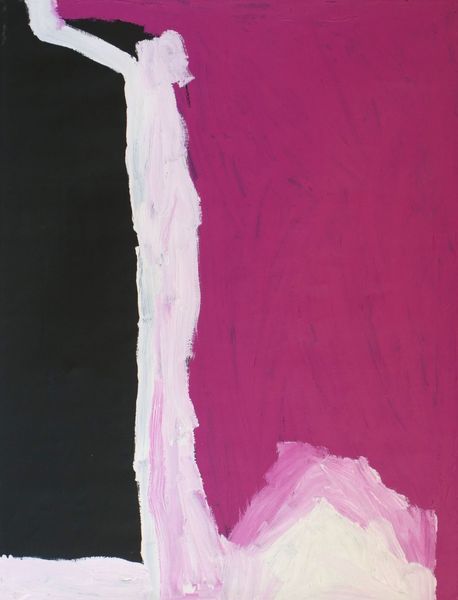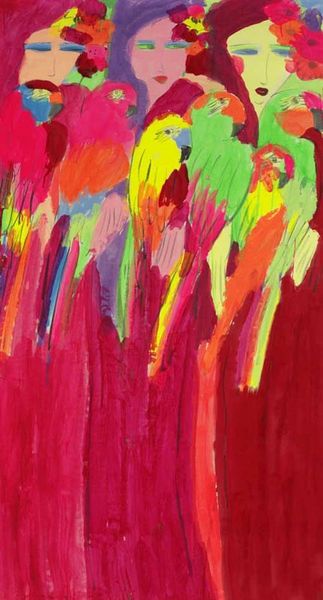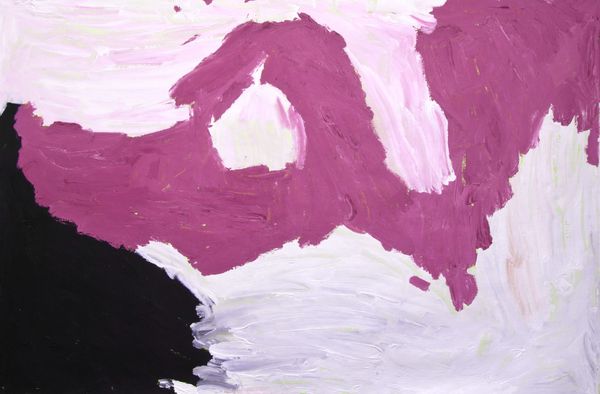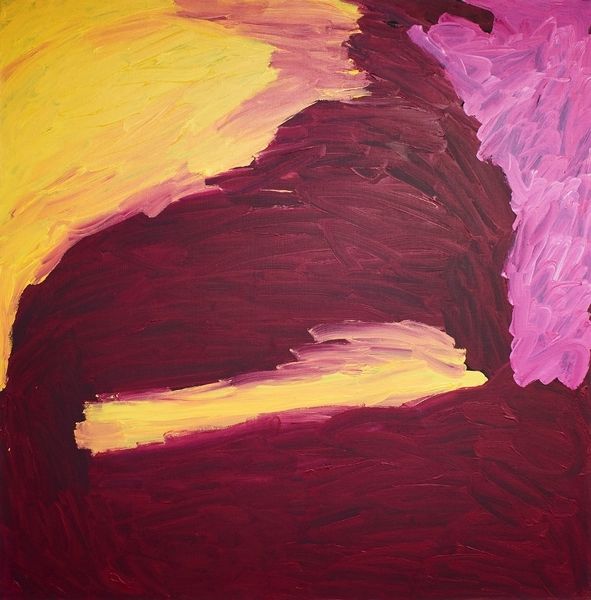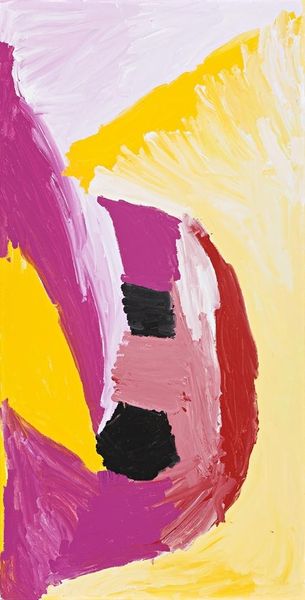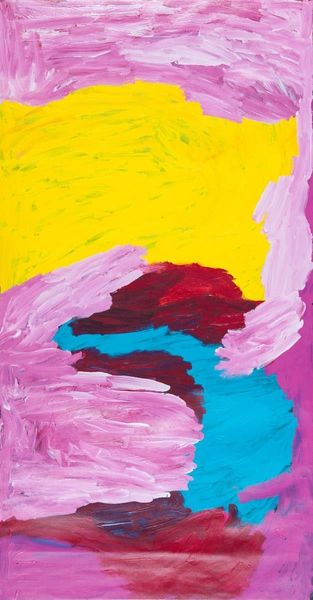
Copyright: Sally Gabori,Fair Use
Curator: Alright, let's discuss Sally Gabori's "Dibirdibi Country" from 2010, crafted with acrylic on canvas. Editor: My immediate impression is its striking use of colour; a landscape distilled to raw emotion, almost violently joyful. What are your initial thoughts? Curator: It is incredibly vibrant. Gabori, a Kaiadilt woman, only began painting in her late eighties, and her work gained international acclaim for its unique expression of her ancestral lands. This particular painting illustrates Dibirdibi Country, her husband's birthplace on Bentinck Island. Her art directly challenges the Western art historical emphasis on formal training. It privileges lived experience and cultural memory, which radically expands what art can be and who can produce it. Editor: That context deepens the experience. I can now see these blocks of colour as carrying a story, a memory embedded within the landscape. I keep focusing on how that bright yellow slices so aggressively across the canvas. Does that have particular significance in Kaiadilt culture? Curator: The yellow area probably represents a specific geographical place, its intense saturation reflective of her personal connection to the land. Think about how displacement affects cultural expression. The Kaiadilt people were forcibly relocated in the mid-20th century and their connection to their ancestral lands was deeply affected. In Gabori’s paintings we see that displacement, longing, and memory become incredibly potent forces. The shapes and colours she uses reference ancestral places and stories. Editor: So, this isn’t just landscape painting as the Western art world understands it; it’s cartography, history, and personal narrative rolled into one expressive act. The use of high-keyed colours becomes a defiance, a celebration of resilience against a backdrop of dispossession. It feels… radical. Curator: Absolutely. Her late entry into the art world disrupts conventional narratives about artistic development and expertise. Gabori's work urges a more inclusive approach, and reminds us of art’s capacity to give power to those often on the periphery. Editor: It changes how you view the space, doesn't it? Instead of mere scenery, it's layered with stories, feelings, even acts of resistance. It really is an honor to observe these artistic reflections and appreciate the social weight this painting embodies. Curator: I concur entirely. The seemingly simple color palette and shapes contain entire worlds of experience and resilience, offering a perspective rarely highlighted in mainstream historical accounts.
Comments
No comments
Be the first to comment and join the conversation on the ultimate creative platform.
